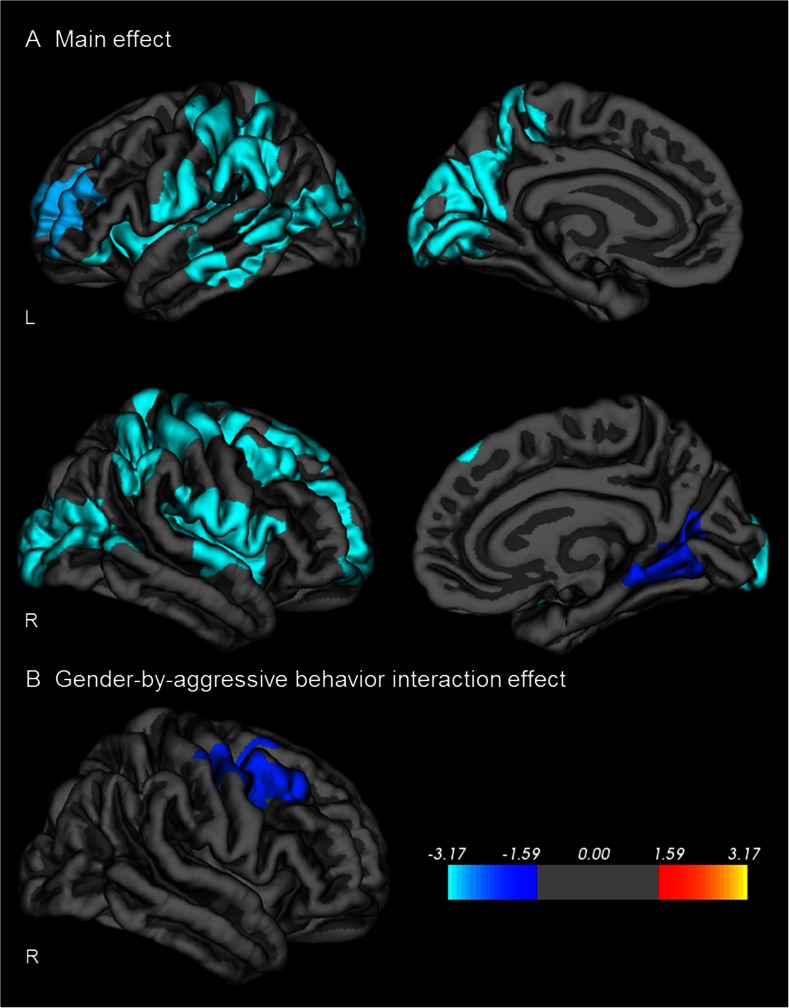Fig. 2.
Relation between cortical gyrification and aggressive behavior. Sex, age, and IQ were used as covariates (Monte Carlo corrected cluster-wise p < .05). a) Cortical gyrification was negatively associated with aggression in a cluster including the left precentral cortex, extending to the postcentral, paracentral, parietal, temporal, occipital, precuneus, and inferior frontal cortex as well as in a cluster including the left rostral middle frontal cortex (i.e.reduced gyrification was associated with more aggressive behavior). In the right hemisphere, aggressive behavior was associated with reduced gyrification in a cluster including the precentral cortex, extending anteriorly to the frontal cortex, and posteriorly to postcentral, and parietal cortex. The second right hemisphere cluster included the postcentral and insular cortex. The third right hemisphere cluster included the lateral occipital and inferior parietal cortex, while the forth cluster included the lingual cortex, extending to the precuneus and cuneus. b) A moderating effect of gender was found for a cluster including the right middle frontal, and superior frontal cortex and for a cluster including the right right precentral, postcentral, frontal, and supramarignal cortex. In this region, greater aggressive behavior was associated with reduced gyrification in boys only. Colors represent –log10 p-value

